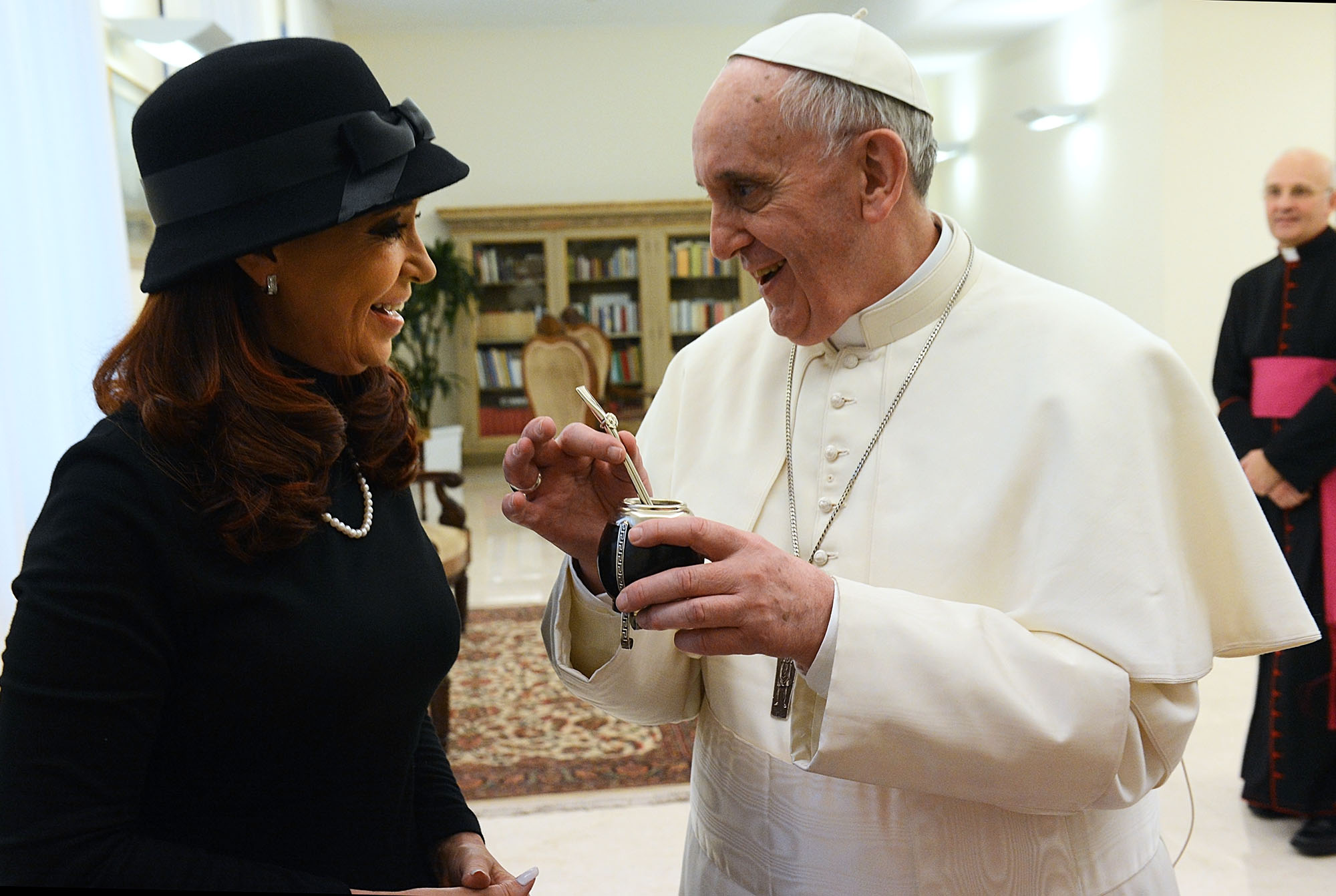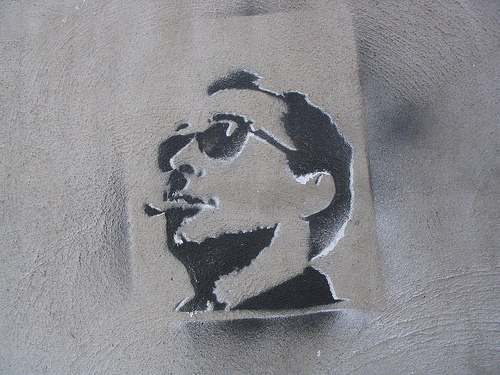|
Third Cinema
Third Cinema () is a Latin American film movement formed in the 1960s which critiques neocolonialism, the capitalist system, and the Hollywood model of cinema as mere entertainment to make money. The term was coined in the manifesto ''Hacia un tercer cine'' (''Toward a Third Cinema''), written in the late 1960s by Argentine filmmakers Fernando Solanas and Octavio Getino, members of the '' Grupo Cine Liberación'' and published in 1969 in the journal '' Tricontinental'' by the OSPAAAL (Organization of Solidarity with the People of Asia, Africa and Latin America). Definition Solanas and Getino's manifesto considers 'First Cinema' to be the Hollywood production model that idealizes bourgeois values to a passive audience through escapist spectacle and individual characters. 'Second Cinema' is the European art film, which rejects Hollywood conventions but is centred on the individual expression of the auteur director. Third Cinema is meant to be non-commercialized, challenging Hollyw ... [...More Info...] [...Related Items...] OR: [Wikipedia] [Google] [Baidu] |
Latin American Film Movement
Latin American cinema refers collectively to the film output and film industries of Latin America. Latin American film is both rich and diverse, but the main centers of production have been Argentina, Brazil and Mexico. Latin American cinema flourished after the introduction of sound, which added a linguistic barrier to the export of Hollywood film south of the border. History The origins of early filmmaking is generally associated with Salvador Toscano Barragán. In 1898 Toscano made Mexico's second film with a plot, titled ''Don Juan Tenorio''. During the Mexican Revolution, Toscano recorded several clips of the battles, which would become a full-length documentary in 1950, assembled by his daughter. Other short films were either created or influenced from French film-makers. Mexican movies from the Golden Era in the 1940s and 1950s are significant examples of Latin American cinema. Mexican movies were exported and exhibited in all Latin America and Europe. The film ''Mari ... [...More Info...] [...Related Items...] OR: [Wikipedia] [Google] [Baidu] |
Julio García Espinosa
Julio García Espinosa (5 September 1926 – 13 April 2016) was a Cuban film director and screenwriter. He directed fourteen films between 1955 and 1998. His 1967 film '' The Adventures of Juan Quin Quin'' was entered into the 5th Moscow International Film Festival
The 5th Moscow International Film Festival was held from 5 to 20 July 1967. The Grand Prix was ...
[...More Info...] [...Related Items...] OR: [Wikipedia] [Google] [Baidu] |
Eurocentrism
Eurocentrism (also Eurocentricity or Western-centrism) refers to viewing Western world, the West as the center of world events or superior to other cultures. The exact scope of Eurocentrism varies from the entire Western world to just the continent of Europe or even more narrowly, to Western Europe#Cold War, Western Europe (especially during the Cold War). When the term is applied historically, it may be used in reference to the presentation of the European perspective on history as Subjectivity and objectivity (philosophy)#In history and historiography, objective or absolute, or to an Apologia#Modern analysis, apologetic stance toward European colonialism and other forms of imperialism. The term "Eurocentrism" dates back to the late 1970s but it did not become prevalent until the 1990s, when it was frequently applied in the context of decolonization and development aid, development and humanitarian aid that industrialised countries offered to developing countries. The term ha ... [...More Info...] [...Related Items...] OR: [Wikipedia] [Google] [Baidu] |
Mate (beverage)
Mate ( ; Spanish: , Portuguese: ) is a traditional South American caffeine-rich infused herbal drink. It is also known as in Portuguese, in Spanish, and ''kaʼay'' in Guarani language, Guarani. It is made by soaking dried yerba mate (''Ilex paraguariensis'') leaves in hot water and is traditionally served with a metal straw () in a container typically made from a calabash gourd (also called the ), from water-resistant hardwoods such as Lapacho or Palo Santo, and also made from a cattle horn () in some areas. A very similar preparation, known as , removes some of the plant material and sometimes comes in tea bags. Today, mate is sold commercially in tea bags and as bottled iced tea. Mate has been originally consumed by the Guaraní people, Guaraní and Tupi people, Tupi peoples native to Paraguay, north-east of Argentina and South of Brazil. After European colonization, it was spread across the Southern Cone countries, namely Argentina, Paraguay, Uruguay and Chile, but it is a ... [...More Info...] [...Related Items...] OR: [Wikipedia] [Google] [Baidu] |
Program Director
In service industries, such as education, a program manager or program director researches, plans, develops and implements one or more of the firm's professional services. For example, in education, a program director is responsible for developing and maintaining degree-granting programs and/or other educational services. In program management, the Program Director is a senior manager responsible for the overall success of the program. A program director's role in a company that sells professional services is similar to a product manager's role in a company that sells tangible goods. Broadcasting In radio or television, a program director or director of programming is the person that decides what radio program or TV program will be broadcast and when. Non-profits In the context of non-profit organizations, a program director is responsible for managing one or more of the organization's programs or services in a role similar to that of a chief operating officer A chief op ... [...More Info...] [...Related Items...] OR: [Wikipedia] [Google] [Baidu] |
Mise-en-scène
(; or "what is put into the scene") is the stage design and arrangement of actors in scenes for a theatre or film production, both in the visual arts through storyboarding, visual themes, and cinematography and in narrative-storytelling through directions. The term is also commonly used to refer to single scenes that are representative of a film. has been called film criticism's "grand undefined term". It has been criticized for its focus on the dramatic design aspects rather than the plot itself, as those who utilize tend to look at what is "put before the camera" rather than the story. The use of is significant as it allows the director to convey messages to the viewer through what is placed in the scene, not just the content of the scene. allows the director to not only convey their message but also implement their aesthetic; as such, each director has their own unique . refers to everything in front of the camera, including the set design, lighting, and actors, and t ... [...More Info...] [...Related Items...] OR: [Wikipedia] [Google] [Baidu] |
The Hour Of The Furnaces
''The Hour of the Furnaces'' () is a 1968 Argentine film directed by Octavio Getino and Fernando Solanas. 'The paradigm of revolutionary activist cinema', it addresses the politics of the 'Third worldist' films and Latin-American manifesto of the late 1960s. It is a key part of the ' Third Cinema', a movement that emerged in Latin America around the same time as the film's release. The work is a four-hour trilogy, divided into chapters and united by the theme of dependency and liberation. The first part - "Neo-Colonialism and Violence" - is conceived for diffusion in all types of circuits, and is the one presented at Cannes Classics. In a survey of the 100 greatest films of Argentine cinema carried out by the Museo del Cine Pablo Ducrós Hicken in 2000, the film reached the 22nd position. In a new version of the survey organized in 2022 by the specialized magazines ''La vida útil'', ''Taipei'' and ''La tierra quema'', presented at the Mar del Plata International Film Festiv ... [...More Info...] [...Related Items...] OR: [Wikipedia] [Google] [Baidu] |
Guerrilla Warfare
Guerrilla warfare is a form of unconventional warfare in which small groups of irregular military, such as rebels, partisans, paramilitary personnel or armed civilians, which may include recruited children, use ambushes, sabotage, terrorism, raids, petty warfare or hit-and-run tactics in a rebellion, in a violent conflict, in a war or in a civil war to fight against regular military, police or rival insurgent forces. Although the term "guerrilla warfare" was coined in the context of the Peninsular War in the 19th century, the tactical methods of guerrilla warfare have long been in use. In the 6th century BC, Sun Tzu proposed the use of guerrilla-style tactics in '' The Art of War''. The 3rd century BC Roman general Quintus Fabius Maximus Verrucosus is also credited with inventing many of the tactics of guerrilla warfare through what is today called the Fabian strategy, and in China Peng Yue is also often regarded as the inventor of guerrilla warfare. Guerrilla wa ... [...More Info...] [...Related Items...] OR: [Wikipedia] [Google] [Baidu] |
French New Wave
The New Wave (, ), also called the French New Wave, is a French European art cinema, art film movement that emerged in the late 1950s. The movement was characterized by its rejection of traditional filmmaking conventions in favor of experimentation and a spirit of iconoclasm. New Wave filmmakers explored new approaches to film editing, editing, visual style, and narrative, as well as engagement with the social and political upheavals of the era, often making use of irony or exploring existential themes. The New Wave is often considered one of the most influential movements in the history of cinematography, cinema. However, contemporary critics have also argued that historians have not sufficiently credited its female co-founder, Agnès Varda, and have criticized the movement's prevailing themes of sexism towards women. The term was first used by a group of French film critics and cinephiles associated with the magazine in the late 1950s and 1960s. These critics rejected the ("T ... [...More Info...] [...Related Items...] OR: [Wikipedia] [Google] [Baidu] |
Jean-Luc Godard
Jean-Luc Godard ( , ; ; 3 December 193013 September 2022) was a French and Swiss film director, screenwriter, and film critic. He rose to prominence as a pioneer of the French New Wave film movement of the 1960s, alongside such filmmakers as François Truffaut, Agnès Varda, Éric Rohmer and Jacques Demy. He was arguably the most influential French filmmaker of the post-war era. According to AllMovie, his work "revolutionized the motion picture form" through its experimentation with narrative, continuity, sound, and camerawork. During his early career as a film critic for '' Cahiers du Cinéma'', Godard criticized mainstream French cinema's "Tradition of Quality" and championed Hollywood directors like Alfred Hitchcock and Howard Hawks. In response, he and like-minded critics began to make their own films, challenging the conventions of traditional Hollywood in addition to French cinema. Godard first received global acclaim for '' Breathless'' (1960), a milestone in t ... [...More Info...] [...Related Items...] OR: [Wikipedia] [Google] [Baidu] |
Zengakuren
Zengakuren is a league of university student associations founded in 1948 in Japan. The word is an abridgement of which literally means "All-Japan Federation of Student Self-Government Associations." Notable for organizing protests and marches, Zengakuren has been involved in Japan's anti- Red Purge movement, the anti-military base movement, the Anpo protests against the U.S.-Japan Security Treaty, the 1968–1969 Japanese university protests, and the struggle against the construction of Narita Airport. History Zengakuren emerged in the early postwar period as students at Japanese universities established self-governing associations (''jichikai'') in order to protest against perceived fascist remnants in the university system and to organize against proposed tuition hikes. All university students were automatically enrolled in these associations, and dues were automatically deducted from their tuition. In the wake of a failed general strike in 1947, the Japan Communist P ... [...More Info...] [...Related Items...] OR: [Wikipedia] [Google] [Baidu] |





